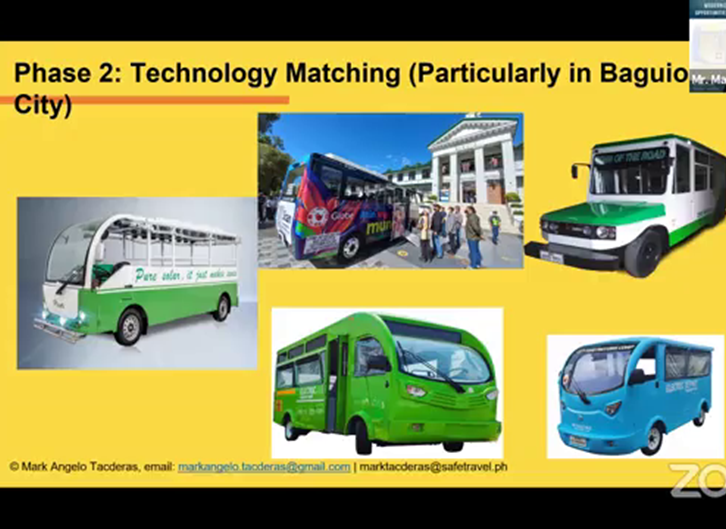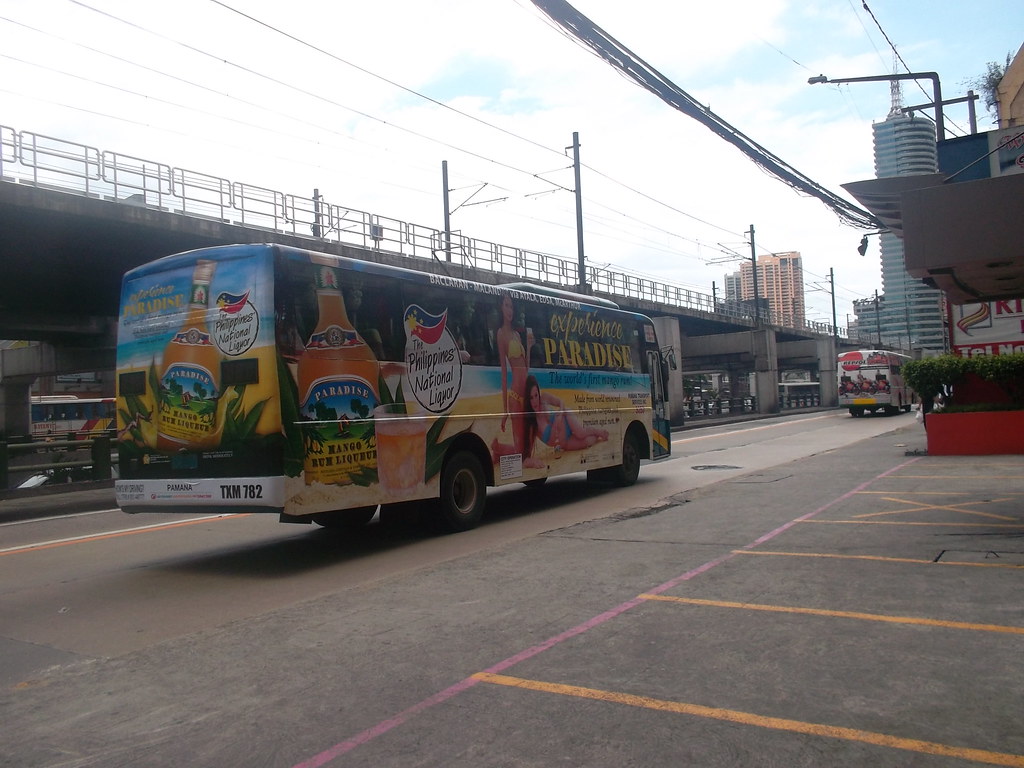Take Full Advantage Of Direct Exposure with Transit Advertising Philippines
Take Full Advantage Of Direct Exposure with Transit Advertising Philippines
Blog Article
Comprehending the Role of Transit Advertising And Marketing in Enhancing Brand Exposure and Customer Engagement
Transportation advertising and marketing has arised as a pivotal aspect in the advertising and marketing landscape, providing special opportunities for brands to raise their presence and engage consumers successfully. With the capacity to reach a restricted and varied audience during their everyday commutes, these advertising and marketing techniques are not just regarding presence; they have to do with creating significant links with possible consumers. As we explore the multifaceted benefits and ingenious techniques within transportation advertising, it becomes vital to take into consideration just how these components jointly affect customer perception and behavior, raising questions about their long-lasting influence on brand name commitment.
Definition of Transit Advertising
Transit advertising refers to the practice of advertising items, solutions, or brands through promotions positioned around public transport systems. This form of advertising and marketing incorporates a range of placements, including posters on trains and buses, electronic screens at transportation terminals, and wraps on the exterior of automobiles. It intends to get to a varied audience, profiting from the high foot traffic associated with public transportation.
Transit advertising is purposefully positioned to capture the interest of commuters, that commonly spend substantial time waiting or taking a trip. By incorporating advertisements right into the daily regimens of individuals, brand names can create a long-term perception and foster brand name recognition. The tool is especially reliable in metropolitan settings, where public transportation is a key mode of traveling.
Additionally, transportation advertising can assist in localized targeting, enabling organizations to reach details demographics based on transportation courses and station locations. As metropolitan populaces grow and the use of public transportation increases, this marketing technique has gotten prestige as an important element of incorporated marketing methods. The vibrant nature of transportation marketing, incorporated with its ability to engage customers in a restricted setting, underscores its importance in modern advertising and marketing practices.
Benefits of Transit Marketing
The performance of transportation advertising and marketing lies in its capability to provide a wide variety of advantages to brand names looking for to enhance visibility and engagement. One of the main advantages is the substantial reach it supplies; transportation advertisements can properly target varied demographics throughout urban locations, getting to both pedestrians and travelers alike. This wide direct exposure significantly boosts brand awareness.
Another advantage is the high regularity of impacts. As transportation vehicles follow well-known paths and quit at multiple areas, they develop repeated direct exposure that enhances brand messages. This regularity cultivates knowledge, which is critical in customer decision-making.
Transportation marketing is likewise affordable compared to various other media systems. Provided its expansive reach and potential for high impacts, brand names commonly experience a lower cost per thousand impacts (CPM), optimizing their marketing budget.
In addition, transportation ads can create a feeling of neighborhood connection. By straightening with regional transit systems, brand names can resonate with local target markets and foster a feeling of regional satisfaction. This local method enhances brand name loyalty and involvement, making transit advertising an engaging choice for organizations aiming to solidify their existence out there.

Efficient Strategies for Transportation Campaigns
To make best use of the effect of transit campaigns, brand names ought to utilize calculated preparation and execution customized to their target audience. Initially, identifying the market characteristics of the target market using public transit is critical. This enables brand names to create individualized messaging that reverberates with potential consumers.
Next, choosing the appropriate transit mediums is crucial. Whether utilizing bus covers, metro posters, or digital screens, each tool has one-of-a-kind advantages that can improve presence. As an example, lively visuals on bus covers can stand out, while digital advertisements can be upgraded frequently to show prompt promos.
Moreover, integrating a cohesive branding method throughout transportation platforms ensures consistency and strengthens the brand name's identification. Using distinctive styles and remarkable taglines will enhance brand recall among commuters.
By employing these strategies, brand names can successfully harness the capacity of transit advertising and marketing, cultivating higher awareness and link with their target audience. Inevitably, a well-executed transit campaign can drive significant growth in brand presence and consumer engagement.

Measuring Influence and Interaction
In assessing the effectiveness of transportation marketing campaign, look at this now precise measurement of influence and interaction is important for brand names seeking to maximize their advertising strategies. Metrics such as reach, regularity, and impressions give fundamental information to examine visibility. Assessing these aspects helps establish the number of prospective customers are revealed to the ads throughout their everyday commutes.
Involvement can be additional evaluated via consumer communications, such as site web traffic, social media states, and direct actions to calls-to-action included in the ads. Using devices like QR codes or distinct Links can facilitate monitoring of customer behavior directly connected to transportation campaigns. Studies and feedback systems also act as valuable methods to collect qualitative information on customer perceptions and recall of the promotion.
Moreover, advanced analytics and acknowledgment versions can associate transit exposure with subsequent investing in behavior, providing insights right into the return Visit Website on financial investment. By employing an extensive method that integrates qualitative and measurable actions, brands can develop a nuanced understanding of their transit advertising impact. Eventually, this data-driven technique allows brand names to fine-tune their projects, guaranteeing they resonate successfully with target market and improve general brand exposure.
Study of Successful Campaigns
Successful transit advertising projects offer as engaging instances of exactly how efficient techniques can elevate brand presence and involvement. Transit Advertising Philippines. One noteworthy case is the "I Love New York" project, which changed the city's picture and attracted millions of tourists. By making use of train ads, billboards, and bus covers, the project created a solid, natural brand identity, causing a considerable uptick in tourism and neighborhood service patronage
One more exemplary project is Coca-Cola's "Share a Coke" effort, which leveraged transit advertising and marketing to customize the brand experience. By including prominent names on promotional products across numerous transit systems, Coca-Cola promoted a deeper psychological connection with customers, encouraging them to share their experiences on social media sites.
Furthermore, the "Got Milk?" campaign successfully utilized mass transit ads to get to a broad target market, strengthening the message of the relevance of milk in a balanced diet regimen. The campaign saw a quantifiable boost in milk intake in target demographics.
These study show that when find out this here implemented thoughtfully, transportation advertising can substantially enhance brand presence, foster consumer interaction, and drive quantifiable results, showing its vital function in modern-day advertising strategies. - Transit Advertising Philippines
Final Thought
In conclusion, transit advertising and marketing serves as an important device for enhancing brand exposure and cultivating consumer engagement. By using purposefully placed ads within public transport systems, brand names can effectively enhance and reach diverse audiences recognition with regular direct exposure. The execution of targeted messaging and innovative techniques additionally magnifies the influence of transit campaigns. Ultimately, the capability to determine interaction and examine effective instance researches emphasizes the performance of transportation advertising and marketing in driving brand name commitment and customer communications.
Transportation advertising and marketing has actually emerged as a critical element in the advertising and marketing landscape, supplying special chances for brands to boost their exposure and engage customers properly.Furthermore, transit advertising and marketing can promote localized targeting, allowing organizations to get to particular demographics based on transportation courses and station locations.In reviewing the efficiency of transit advertising and marketing campaigns, exact measurement of impact and involvement is crucial for brands looking for to enhance their marketing approaches.Successful transit advertising and marketing campaigns offer as compelling instances of how reliable techniques can boost brand presence and interaction.In verdict, transit advertising and marketing serves as a crucial tool for improving brand name exposure and cultivating consumer involvement.
Report this page